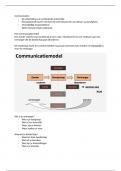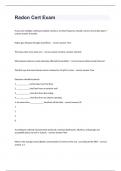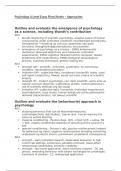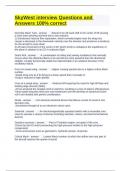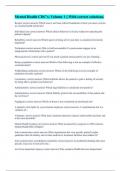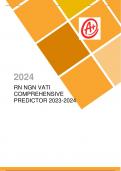Quantitative history formulas and SPSS functions
Ratio x/y → divide one by another
Growth Growth:
- end value – start value
Average Growth:
- (end value – start value) / period in years
Growth rate:
- (end value – start value) / start value * 100 → relative
development/ percentages
Conditions 'Data' → 'Select cases'
ogarithmic
L SPSS → compute variable → LN(variable) or LG10(variable)
Transformation - takes proportional differences into account
Simple Index I = RND(variable/value base year) * 100
Index Consumer Price/Quantity Index:
- Laspeyres (quantatiesbaseperiod)
IpL = (∑ p 1 * q 0 / ∑ p 0 * q 0 ) * 100
- Paasche (quantitiescurrentperiod)
IpP = (∑ p 1 * q 1 / ∑ p 0 * q 1 ) * 100
0 = prices base year
p
p 1 = prices current year
q 0 = quantities base year
q 1 = quantities current year
Create variable SPSS: Transform → ‘compute variable’
Bins/classes SPSS: transform → ‘visual binning’
Percentile PSS:sort ascending> ‘analyze’ > ‘descriptive statistics’>
S
‘frequencies’ > statistics > percentile
→ fill in the percentile that you want to find
- Rank/N*100 N→ total number of cases
Frequency SPSS: ‘analyze’ > ‘descriptive statistics’ > ‘frequencies’
Crosstabs SPSS: ‘analyze’ > ‘descriptive statistics’ > ‘crosstabs’
- Compare two variables
ustom tables:
C SPSS: ‘analyze’ > ‘tables’ > ‘custom tables’
calculated - mean= average
values - count= adding up/sum
Graphs SPSS: ‘Graphs’ → …
Which graph? Nominal:
- Absolute/relative → Bar chart
- Univariate/bivariate → Stacked graph, Pie chart
Ordinal/scale:
- Absolute/relative/cumulative → Histogram
, - nivariate/bivariate → Time series (line), Boxplot, Population
U
pyramid
ini coëfficiënt
G ini coefficient: Value between 0 and 1 (or 0 and 100) →
G
and lorenz curve 0 represents total equality, 1 total inequality
- tells u: the distribution of income or consumption among
individuals or households
The Gini coefficient captures how far the Lorenz curve falls from the
'line of equality'
- lorenz curve: is the curve from the straight line
ne-Sample
O PSS: Analyze > Compare Means:
S
T-Test One-Sample T-Test
- look at the two boundaries (lower, upper)
- tells u: examines whether the mean of a population is
statistically different from a known or hypothesized value =
(observed – expected)
Independent- PSS: Analyze > Compare Means:
S
Samples T-Test Independent-Samples T-Test
- look at levrens test smaller than 0.05, choose the second row
→ look at 2-tailed sig. smaller than 0.05 it is significant
- tells u: compare 2 sample means to one another
Z-scores PSS ‘Analyze’ → ‘Descriptive Statistics’ → ‘Descriptives’ → ‘save as
S
variable’
- Creates a new variable
- 0 is the average of ditribution→ 0.9= 0.9 standard deviations
away from the central value
- z score can be plus or minus → minus=left, plus=right
- tells u: how far from the mean a data point is (the amount of
deviations)
enter and
C PSS: ‘Analyze’ → ‘Descriptive statistics’ → ‘Statistics’
S
distribution nominal
(mode, median, - mode
mean) ordinal
- median and quartile deviation. Median, mode and quartiles.
(quartiles: Q3-Q1/2)
scale
- mean with arithmetical average. Median, mode, mean, std
deviation, skewness, quartiles
- Median: used when data is skewed a lot (more than 1 or -1) →
divides the exact middle
- Mode: value that occurs the most
- Mean: all the observations counted up/the amount of
observations
uartile
Q PSS: ‘Analyze’ → ‘Descriptive statistics’ → ‘Statistics’ → ‘Quartiles’
S
distribution Calculate → Percentiles: (Q3(75)-Q1(25))/2= quartile distribution
Trendline Linear regression line /
- Straight line
- ‘Fit line’ in SPSS’ Graph Editor
Ratio x/y → divide one by another
Growth Growth:
- end value – start value
Average Growth:
- (end value – start value) / period in years
Growth rate:
- (end value – start value) / start value * 100 → relative
development/ percentages
Conditions 'Data' → 'Select cases'
ogarithmic
L SPSS → compute variable → LN(variable) or LG10(variable)
Transformation - takes proportional differences into account
Simple Index I = RND(variable/value base year) * 100
Index Consumer Price/Quantity Index:
- Laspeyres (quantatiesbaseperiod)
IpL = (∑ p 1 * q 0 / ∑ p 0 * q 0 ) * 100
- Paasche (quantitiescurrentperiod)
IpP = (∑ p 1 * q 1 / ∑ p 0 * q 1 ) * 100
0 = prices base year
p
p 1 = prices current year
q 0 = quantities base year
q 1 = quantities current year
Create variable SPSS: Transform → ‘compute variable’
Bins/classes SPSS: transform → ‘visual binning’
Percentile PSS:sort ascending> ‘analyze’ > ‘descriptive statistics’>
S
‘frequencies’ > statistics > percentile
→ fill in the percentile that you want to find
- Rank/N*100 N→ total number of cases
Frequency SPSS: ‘analyze’ > ‘descriptive statistics’ > ‘frequencies’
Crosstabs SPSS: ‘analyze’ > ‘descriptive statistics’ > ‘crosstabs’
- Compare two variables
ustom tables:
C SPSS: ‘analyze’ > ‘tables’ > ‘custom tables’
calculated - mean= average
values - count= adding up/sum
Graphs SPSS: ‘Graphs’ → …
Which graph? Nominal:
- Absolute/relative → Bar chart
- Univariate/bivariate → Stacked graph, Pie chart
Ordinal/scale:
- Absolute/relative/cumulative → Histogram
, - nivariate/bivariate → Time series (line), Boxplot, Population
U
pyramid
ini coëfficiënt
G ini coefficient: Value between 0 and 1 (or 0 and 100) →
G
and lorenz curve 0 represents total equality, 1 total inequality
- tells u: the distribution of income or consumption among
individuals or households
The Gini coefficient captures how far the Lorenz curve falls from the
'line of equality'
- lorenz curve: is the curve from the straight line
ne-Sample
O PSS: Analyze > Compare Means:
S
T-Test One-Sample T-Test
- look at the two boundaries (lower, upper)
- tells u: examines whether the mean of a population is
statistically different from a known or hypothesized value =
(observed – expected)
Independent- PSS: Analyze > Compare Means:
S
Samples T-Test Independent-Samples T-Test
- look at levrens test smaller than 0.05, choose the second row
→ look at 2-tailed sig. smaller than 0.05 it is significant
- tells u: compare 2 sample means to one another
Z-scores PSS ‘Analyze’ → ‘Descriptive Statistics’ → ‘Descriptives’ → ‘save as
S
variable’
- Creates a new variable
- 0 is the average of ditribution→ 0.9= 0.9 standard deviations
away from the central value
- z score can be plus or minus → minus=left, plus=right
- tells u: how far from the mean a data point is (the amount of
deviations)
enter and
C PSS: ‘Analyze’ → ‘Descriptive statistics’ → ‘Statistics’
S
distribution nominal
(mode, median, - mode
mean) ordinal
- median and quartile deviation. Median, mode and quartiles.
(quartiles: Q3-Q1/2)
scale
- mean with arithmetical average. Median, mode, mean, std
deviation, skewness, quartiles
- Median: used when data is skewed a lot (more than 1 or -1) →
divides the exact middle
- Mode: value that occurs the most
- Mean: all the observations counted up/the amount of
observations
uartile
Q PSS: ‘Analyze’ → ‘Descriptive statistics’ → ‘Statistics’ → ‘Quartiles’
S
distribution Calculate → Percentiles: (Q3(75)-Q1(25))/2= quartile distribution
Trendline Linear regression line /
- Straight line
- ‘Fit line’ in SPSS’ Graph Editor

